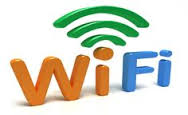 WiFi to the Rescue WiFi to the Rescue
Some of the problems with WiFi are:
It is slow. While the advertised throughput may be 600 Megabits per second you are probably going to get 150 Mbps. Meanwhile the wired network is running at 1000mbps or 1Gig. (If you are in a situation where you can actually get the bonding of multiple channels you may get the 300, 450 or even 600 Mbps but that is a rare occurrence.)
Remember that even if your WiFi speed is say 150Mbps and your DSL connection is say 10Mbps then your maximum speed while surfing the Internet will be a little less than 10Mbps regardless of what you do with the WiFi. It is only as fast as the slowest link in the chain.
Many things can slow the speed of WiFi such as;
- Distance from access point. (Less than thirty feet is best.)
- Number of simultaneous connections to that access point. (Too many connections on one access point and you start dropping users. One user is best if you can get it)
- Other electrical signals in the area that are not part of the WiFi network such as lights, power cables.
- Other radio transmissions from microwave ovens, game machines, Bluetooth or cordless phones that use the 2.4 gigabit frequency.
- Walls, most WiFi routers are a “two wall” device assuming that there is no signal blocking material in those walls.
- Even the type of wireless security can affect and slow down some routers with inadequate processors or memory.
- Transmitus Inturuptus. If something blocks the radio signal then you are off line. This can happen in all sorts of places in everyday life. If you are mobile bridges, tunnels and metal buildings can be a problem.
In “real world” use, net IP layer throughput of WiFi is typically 60% of the air link rate due to WiFi being half-duplex with ACKs, and being CSMA/CA. The actual data you seek may only be a few percent of the total traffic that is being broadcast. Bottom line, if you can get the 150Mbps consider yourself fortunate.
Some major software companies recommend a hard wired network;
- Peachtree
- QuickBooks
- Thomson Reuters
They do not support wireless networking with their system at all.
Security;
Well the wired network is, by nature more secure. Yes that is true but only slightly more secure. Network security is huge problem either way. However that is the subject for another newsletter.
What can you do to escape some of these pitfalls?
Get closer!
Distance is a big killer of WiFi performance. Double the distance and you get one quarter of the signal strength. Weaker signal means slower speeds.
Change the channel!
Your router shipped from the factory set up to use the default channel. So unless you are the only person on the block there is a good chance that somebody nearby could be using that channel. That’s OK wireless routers have multiple channels. Try switching to one of the non overlapping channels, (1, 6 or 11).
Use the 5GHz band!
Dual band “N” class wireless routers have a second option. In addition to the 2.4GHz band they also have a 5GHz band. If your device can use the 5GHz connection then do it. This will eliminate a lot of problems right away.
Get more access points.
Under provisioning and overloading the router will result in slower speeds and more dropped connections. Wireless cameras and Network Area Storage systems can greatly increase the load on your wireless router. Consider more access points and spread them around. Correct placement is very important and may require some empirical testing.
Go Wired!
If all else fails and your device is Ethernet capable you can connect a cable at least for temporary use, when the need arises. Wired is easy! No special access codes just connect and go.
Go back to the top
|